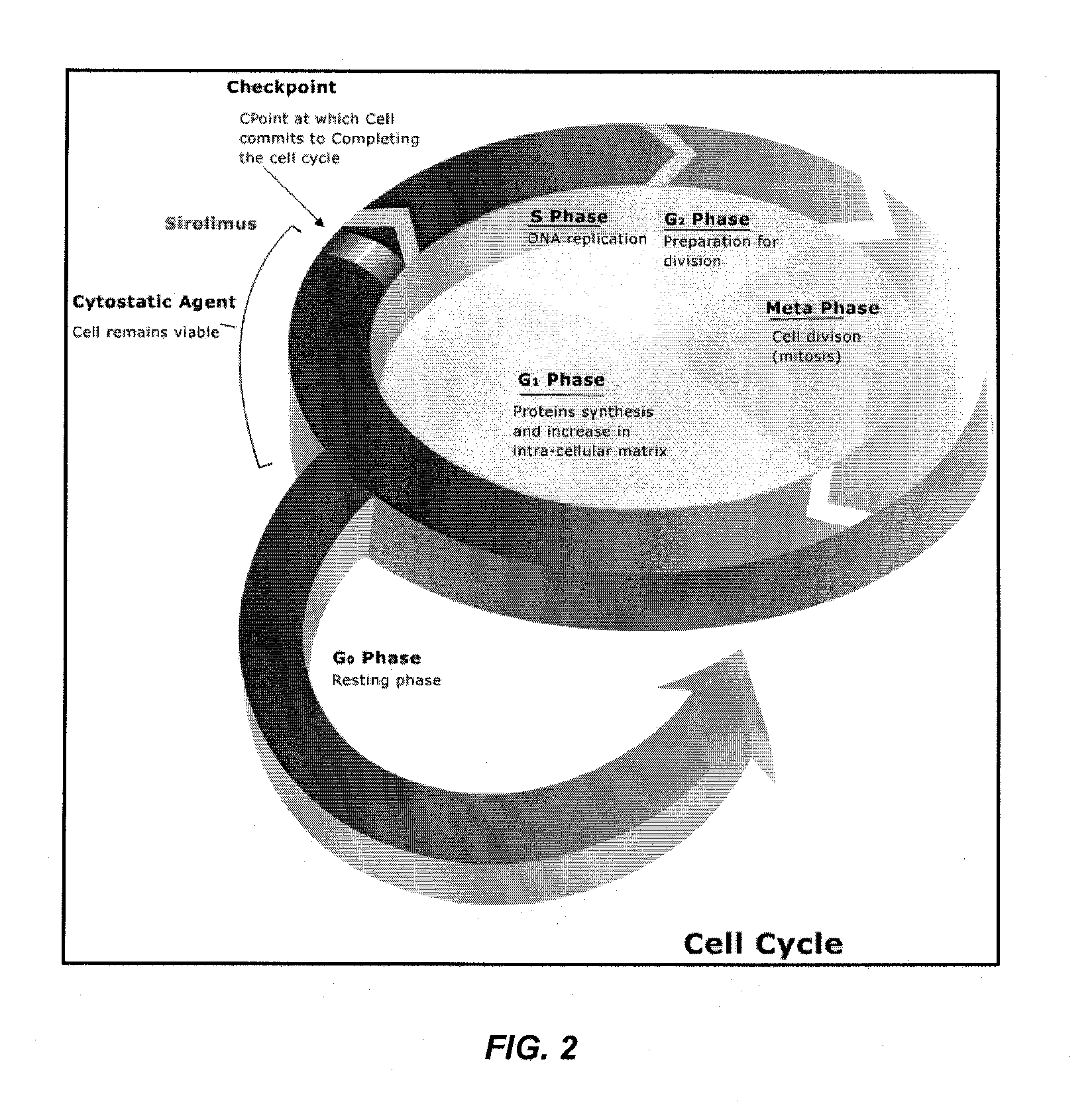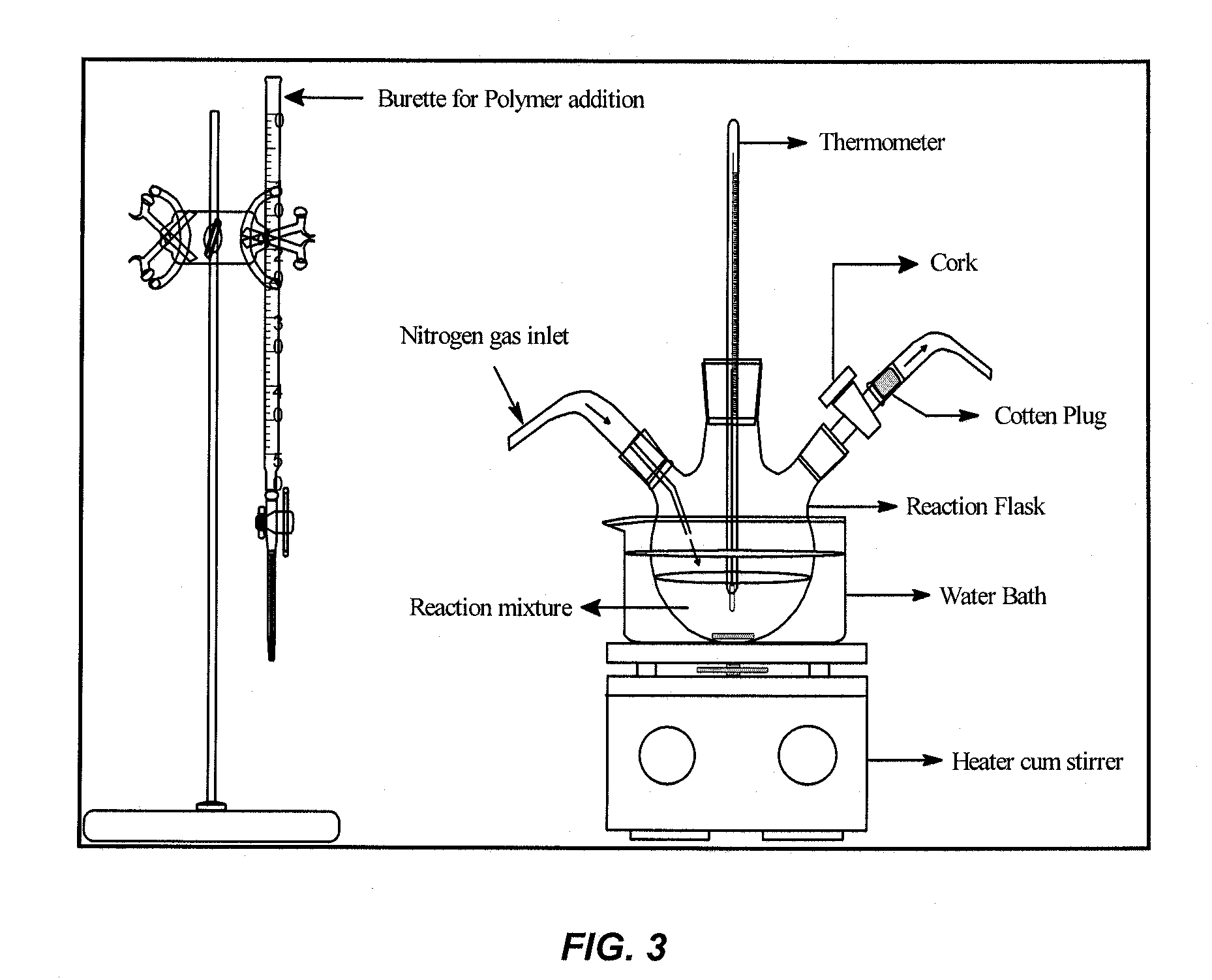Coatings for implantable medical devices
- Summary
- Abstract
- Description
- Claims
- Application Information
AI Technical Summary
Benefits of technology
Problems solved by technology
Method used
Image
Examples
example 1
Manufacture of Drug Eluting Stent
[0181]The stents were manufactured from surgical grade Stainless Steel 316 L tube. Tubes were first cut with a laser machine according to a programmed design. The cut stents were electropolished for surface smoothness. The polished stents were then transferred to a clean room for a quality check. In a coating room, the stents were coated with paclitaxel. The coated stents were crimped on rapid exchange balloon catheters. The packed stents were sterilized with EtOH. A quality check was carried out at each and every stage and non-conforming stents were rejected.
example 2
Preparation of Heparinized Poly-L-Lactide (PLLA)
[0182]The synthesis of a heparinized poly-l-lactide is outlined below.
Materials
[0183]1) poly-l-lactide (inherent viscosity=2.6−3.2 dL / g)
[0184]2) heparin sodium (from porcine intestinal mucosa, 150-190 lU / mg)
[0185]3) dicyclohexylcarbodiimide (DCC)
[0186]4) 4-(dimethyl amino) pyridine (DMAP)
[0187]5) formamide
[0188]6) N,N-dimethyl formamide (DMF)
Method
[0189]Heparin-conjugated PLLA was prepared by a direct coupling reaction using dicyclohexylcarbodiimide (DCC) / 4-(dimethyl amino) pyridine (DMAP). The experimental set-up is depicted in FIG. 2.
[0190]Heparin (0.6 g, 1×10−4 mol) and PLA (6.0 g, 0.5×10−4 mol) were first dissolved in the N,N-dimethyl formamide (250 ml) and dichloromethane (DCM, 500 ml), respectively. The heparin solution was stirred and heated in a round bottom flask for 1 hr at a temperature of 50-55° C. Solutions of DCC (0.02 ml 0.1 M) and DMAP (0.2 ml 1.0 M) were then added to the heparin solution followed by addition of the PL...
example 3
Preparation of Heparinized 50 / 50 Poly-D,L-Lactide-co-Glycolide
[0192]The synthesis of a heparinized 50 / 50 poly-d,l-lactide-co-glycolide is outlined below.
Materials
[0193]1) 50 / 50 Poly L-Lactide-co-Glycolide (PLGA)
[0194]2) heparin sodium (from porcine intestinal mucosa, 150-190 lU / mg)
[0195]3) dicyclohexylcarbodiimide (DCC)
[0196]4) 4-(dimethyl amino) pyridine (DMAP)
[0197]5) N,N-dimethyl formamide (DMF)
Method
[0198]Heparin-conjugated PLGA was prepared by a direct coupling reaction using dicyclohexylcarbodiimide (DCC) / 4-(dimethyl amino) pyridine (DMAP) chemistry with an experimental set-up as described in Example 2.
[0199]Heparin (0.6 g, 1×10−4 mol) and PLGA (6.0 g, 0.5×10−4 mol) were first dissolved in the N,N-dimethyl formamide (250 ml) and dichloromethane (DCM, 500 ml), respectively. The heparin solution was stirred and heated in a round bottom flask for 1 hr at a temperature of 50-55° C. Solutions of DCC (0.05 ml 0.1 M) and DMAP (0.5 ml 1.0 M) were then added to the heparin solution fol...
PUM
| Property | Measurement | Unit |
|---|---|---|
| Composition | aaaaa | aaaaa |
| Concentration | aaaaa | aaaaa |
| Surface area | aaaaa | aaaaa |
Abstract
Description
Claims
Application Information
 Login to View More
Login to View More - R&D
- Intellectual Property
- Life Sciences
- Materials
- Tech Scout
- Unparalleled Data Quality
- Higher Quality Content
- 60% Fewer Hallucinations
Browse by: Latest US Patents, China's latest patents, Technical Efficacy Thesaurus, Application Domain, Technology Topic, Popular Technical Reports.
© 2025 PatSnap. All rights reserved.Legal|Privacy policy|Modern Slavery Act Transparency Statement|Sitemap|About US| Contact US: help@patsnap.com



